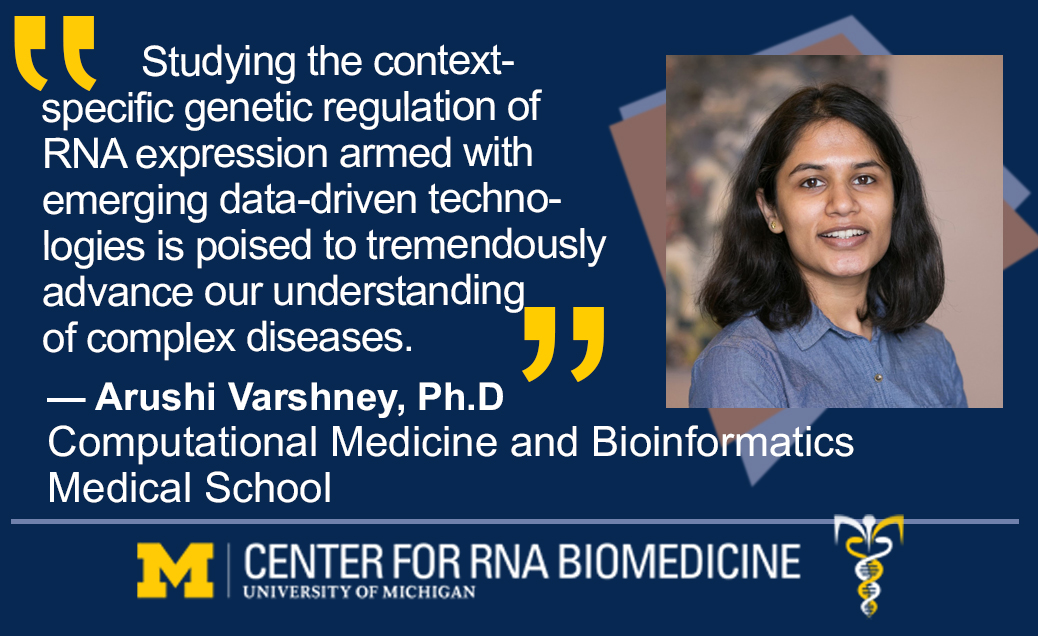Featured Researcher – Arushi Varshney, Ph.D., Computational Medicine and Bioinformatics
Arushi Varshney, Ph.D.
Computational Medicine and Bioinformatics
Medical School
Faculty-Mentor: Stephen C. J. Parker
Google scholar
LinkedIn
Twitter
Through my research, I aim to better understand how predisposition to complex metabolic diseases such as type 2 diabetes (T2D) is encoded in our DNA. I employ computational and statistical approaches to analyze large high-throughput data sets on the genome, epigenome, and transcriptome from both bulk and single-cell platforms in disease-relevant tissues/cells to understand biological mechanisms of gene regulation.
- How does RNA relate to your research interests, and why?
Information encoded in our DNA (genome) intricately percolates over layers of the epigenome, transcriptome, proteome and so on, to orchestrate disease mechanisms. Studying context-specific genetic regulation of RNA expression is critical in understanding disease mechanisms.
- Is there a layman image that could illustrate your research?
Studying the genetic basis of complex disease is like assembling a jigsaw puzzle. Each piece represents information from diverse modalities and integrating this information together helps illustrate the molecular mechanisms in the cell.
- How did you become interested in this topic?
As human genetics students we learn about the genetic basis of diseases. Many Mendelian diseases involve genetic variation that modify the structure or function of proteins. Such strong-effect genetic variants are usually quite rare. Complex diseases on the other hand are characterized by genetic variants that occur more frequently in the population, an each have modest or small effects. Most of such common variants affect participate in modulating the expression of genes. Studying intricate patterns of gene expression regulation by leveraging diverse and large molecular datasets got me interested in this topic.
- Who/what brought you to science?
My mom was a high school physics teacher when I was young (she’s now principal), and I would often accompany her to the physics lab and hang out with the cool kids (:)), numerous field trips to science centers and museums and such and I always loved it. In many ways I was exposed to ideas and concepts that got me interested early on.
- What brought you to the University of Michigan?
I arrived at the UM for my Ph.D.
- What are the main challenges/concerns to achieve your professional goals?
This era of rapidly developing technology, advent of large human datasets and expanding computational capabilities is extremely exciting for computational biologists like me. At the same time, it is imperative to remain focused and detail oriented in our work, and always keep the main scientific questions clear in our minds.
- What’s your favorite hobby?
I’m a plant lady – I love collecting and caring for plants. My small apartment has an absurd number of plants. I dream of having a lush garden one day.

